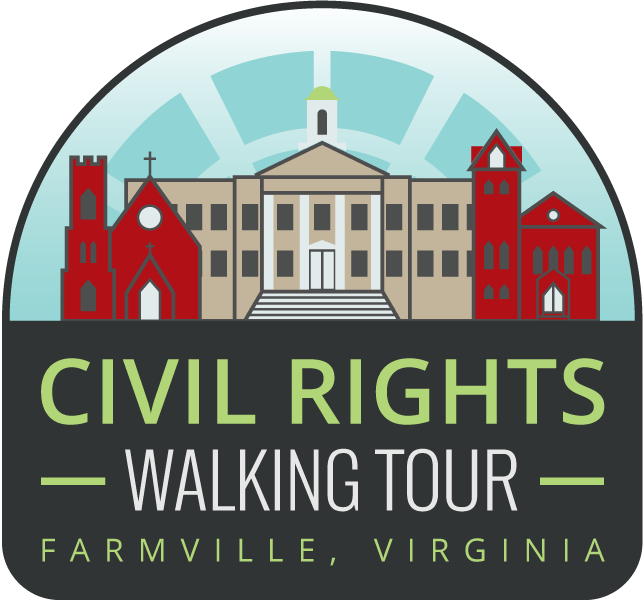
Places
Robert Russa Moton Museum
Constructed in 1939, the Robert Russa Moton High School was built for 180 students. By the 1940s, the student population reached over 450.
Mary E. Branch Community Center/School
Originally called the Farmville Colored School (also Farmville No. 2 or Farmville Training School), this building was constructed in 1926 to serve as an elementary school.
Farmville Shopping Center/Dr. N. P. Miller's office
Dr. Nathaniel Peyton Miller, a prominent African-American dentist, was active in many civic organizations, including the NAACP.
Beulah AME Church & Parsonage
Founded in 1868, Beulah African Methodist Episcopal Church served as a center for civil rights organizing while Prince Edward County Public Schools were closed.
First Baptist Church
First Baptist Church, led from 1949 to 1980 by the Rev. L. Francis Griffin, served as the spiritual and tactical center for the civil rights movement in Farmville.
State Theater
On Sept. 10, 1959, the Prince Edward County School Foundation began the inaugural year of Prince Edward Academy with speeches in the theater formerly located here.
College Shoppe
In addition to drawing attention to the absence of public education, African-American students protested segregated businesses in downtown Farmville in 1963, including the College Shoppe, formerly located here.
Prince Edward County Courthouse
Prince Edward County Courthouse was the site of a May 20, 1961, rally organized by the National Association for the Advancement of Colored People (NAACP) to recognize the seventh anniversary of Brown v. Board of Education and to protest the continued closure of the public schools.
Farmville Baptist Church
Founded in 1836, Farmville Baptist was one of the four churches that young African-American protestors attempted to integrate on Sunday, July 28, 1963, as part of a peaceful "kneel-in."
J.J. Newberry Co. Department Store
On Friday, July 26, 1963, twelve young African-Americans from Prince Edward County staged a sit-in at the lunch counter in the J. J. Newberry Co. department store formerly located here.
Farmville Presbyterian Church
White residents of Prince Edward County were not unanimous in their response to closing the public schools, and differing opinions threatened to undermine established institutions, including Farmville Presbyterian Church, founded in 1844.
Farmville Herald offices
The Farmville Herald, published bi-weekly, was founded in 1890. J. Barrye Wall purchased the Herald in 1921 and served as editor during the period of the school closings.
High Street Monuments
The site of two contrasting monuments. One was erected in 1900 during the height of "Lost Cause" nostalgia for the Confederacy, while the other was dedicated in 2018 to honor persons in the community who aspired to expand freedom and civil rights throughout American history.
Johns Memorial Episcopal Church/Gordon Moss Home
When small groups of African-American students attempted to attend services at four downtown Farmville churches to integrate the traditionally white houses of worship on Sunday, July 28, 1963, John's Memorial, built in 1882, was the only one into which they were admitted.
Jarman Auditorium at Longwood University
Constructed in 1951, Longwood University's auditorium was the site of a June 7, 1955, community meeting.
Race Street Baptist Church/Martha E. Forrester Home
One block east of here at the corner of Franklin and Race Streets stands Martha E. Forrester's home.
Rev. L. Francis Griffin Home
This house was built in 1961 as the parsonage for First Baptist Church and was home to the Rev. L. Francis Griffin and his family.